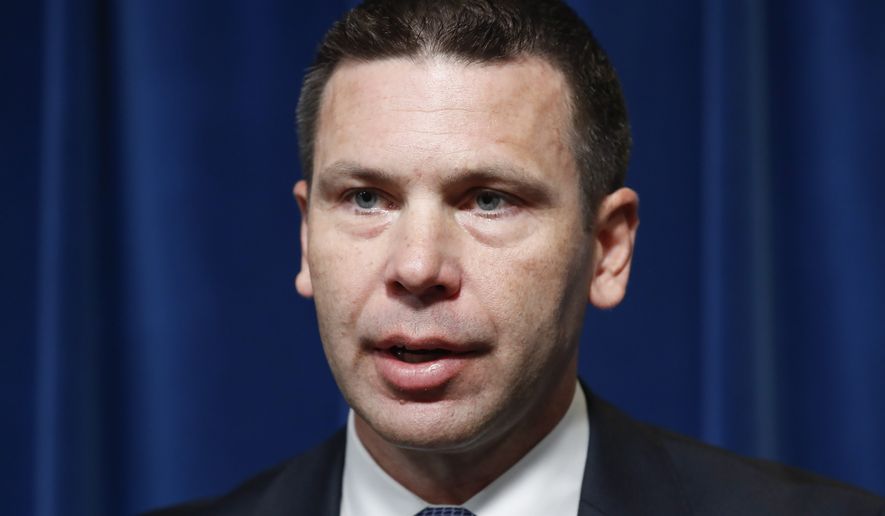Homeland Security will finally end “catch-and-release” of Central American immigrant families caught crossing the border illegally, acting Secretary Kevin K. McAleenan announced Monday, saying the department has finally gotten a handle on the migrant surge that had sowed chaos at the border over the last year.
Mr. McAleenan said families that attempt to claim asylum will usually be sent to wait in Mexico while their cases proceed in U.S. immigration courts. Those who don’t attempt to claim asylum will be quickly returned to their home countries.
The announcement is a sign of how much progress Mr. McAleenan has made in changing the dynamics at the border, cutting record levels of families migrating illegally and striking a series of deals with Honduras, Guatemala and El Salvador to gain their cooperation in repatriating their citizens.
“With some humanitarian and medical exceptions, DHS will no longer be releasing family units from Border Patrol stations into the interior,” the acting secretary said.
Catch-and-release is the name Border Patrol agents gave to the practice of arresting the border crossers then immediately releasing them into the community.
The migrants are supposed to be turned over to U.S. Immigration and Customs Enforcement for detention while their cases proceed, but the surge of families over the last several years, combined with the Flores court settlement limiting detention of minors and families, left the system overwhelmed.
Border Patrol agents were releasing thousands of migrants a day into border communities, leading several to declare emergencies as their shelter capacity, bus stations and resources were pushed beyond their limits.
At its worst point this spring, the Border Patrol nabbed nearly 133,000 migrants in May. Nearly 85,000 of those were parents and children traveling as families, by far a record. As recently as the beginning of 2018, agents were arresting just a tenth that number.
Authorities say smugglers had figured out the loopholes in U.S. law and were advertising them to potential migrants in Central America, telling them that if they brought a child with them, their own or otherwise, they could earn quick release and a chance to disappear into the shadows.
The surge also left Mr. McAleenan’s department with overcrowded border facilities. And a lack of funds at the Health and Human Services Department meant migrant children stacked up border facilities, leading to complaints of unsanitary conditions and “kids in cages.”
Mr. McAleenan on Monday acknowledged those “very difficult humanitarian conditions,” but said the problem was a lack of support from Congress.
The administration has declared an end to catch-and-release before, with last year’s zero-tolerance policy. That policy saw prosecutions of border crossers jump from about 20% to 50% — but it also led to the family separations that became an embarrassment for President Trump.
A court eventually ordered an end to the separations and ordered the families be reunited.
This time around, Mr. McAleenan says they’ve laid the groundwork for success, striking the deals with Central American countries and gaining better cooperation with Mexico to hold asylum seekers.
Mexico has also deployed nearly 25,000 troops to its northern and southern borders to try to block would-be migrants from crossing, Mr. McAleenan said.
• Stephen Dinan can be reached at sdinan@washingtontimes.com.




Please read our comment policy before commenting.